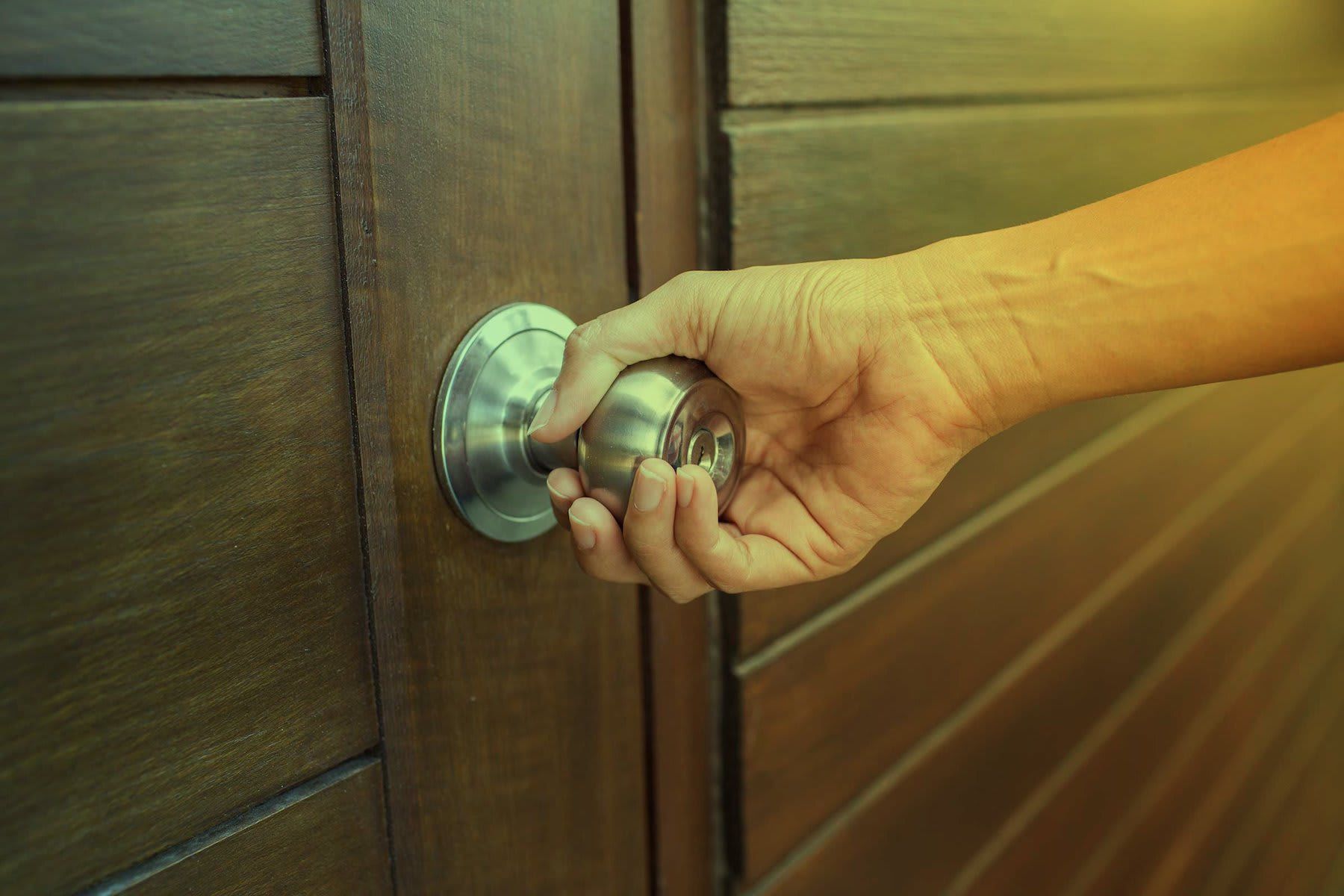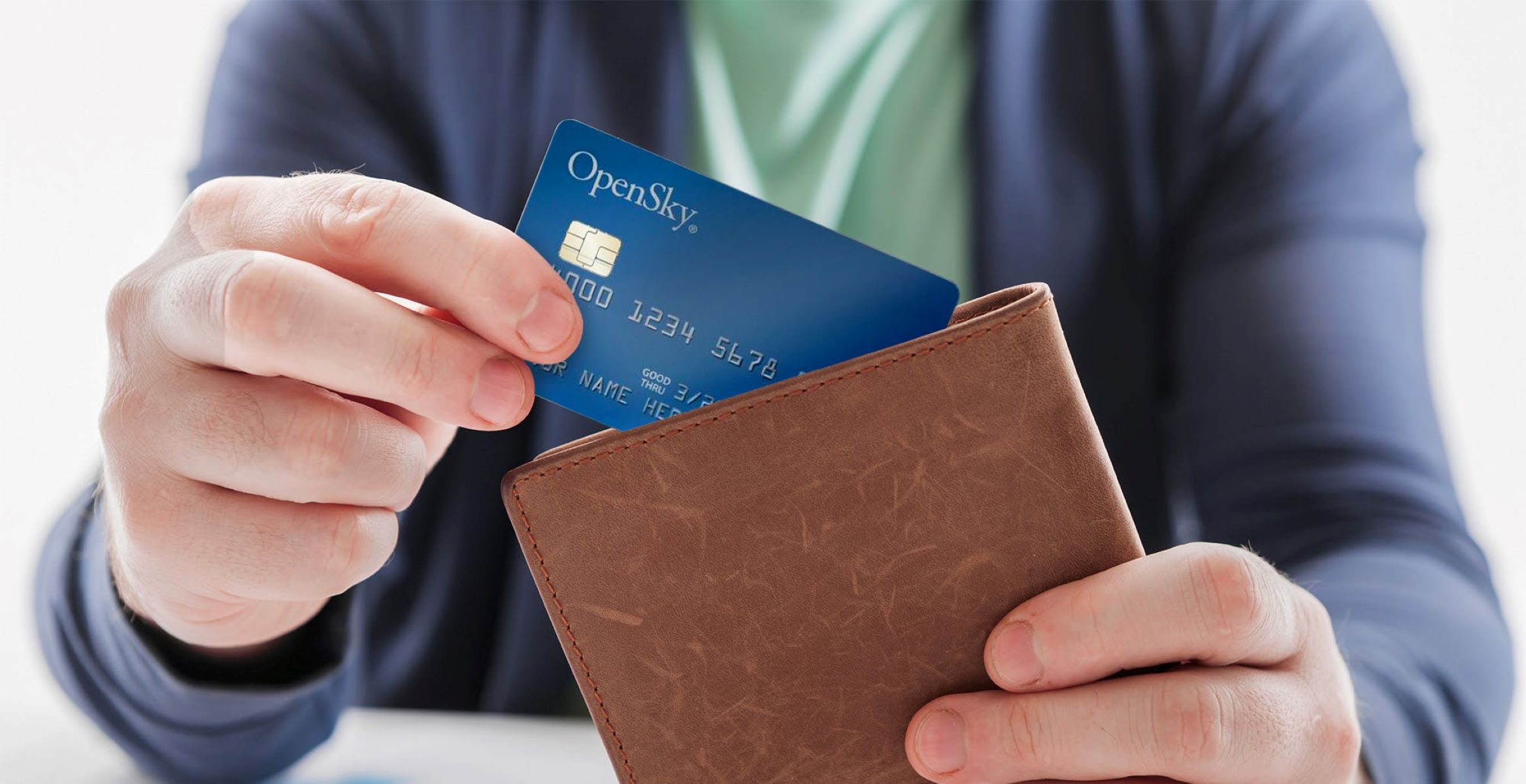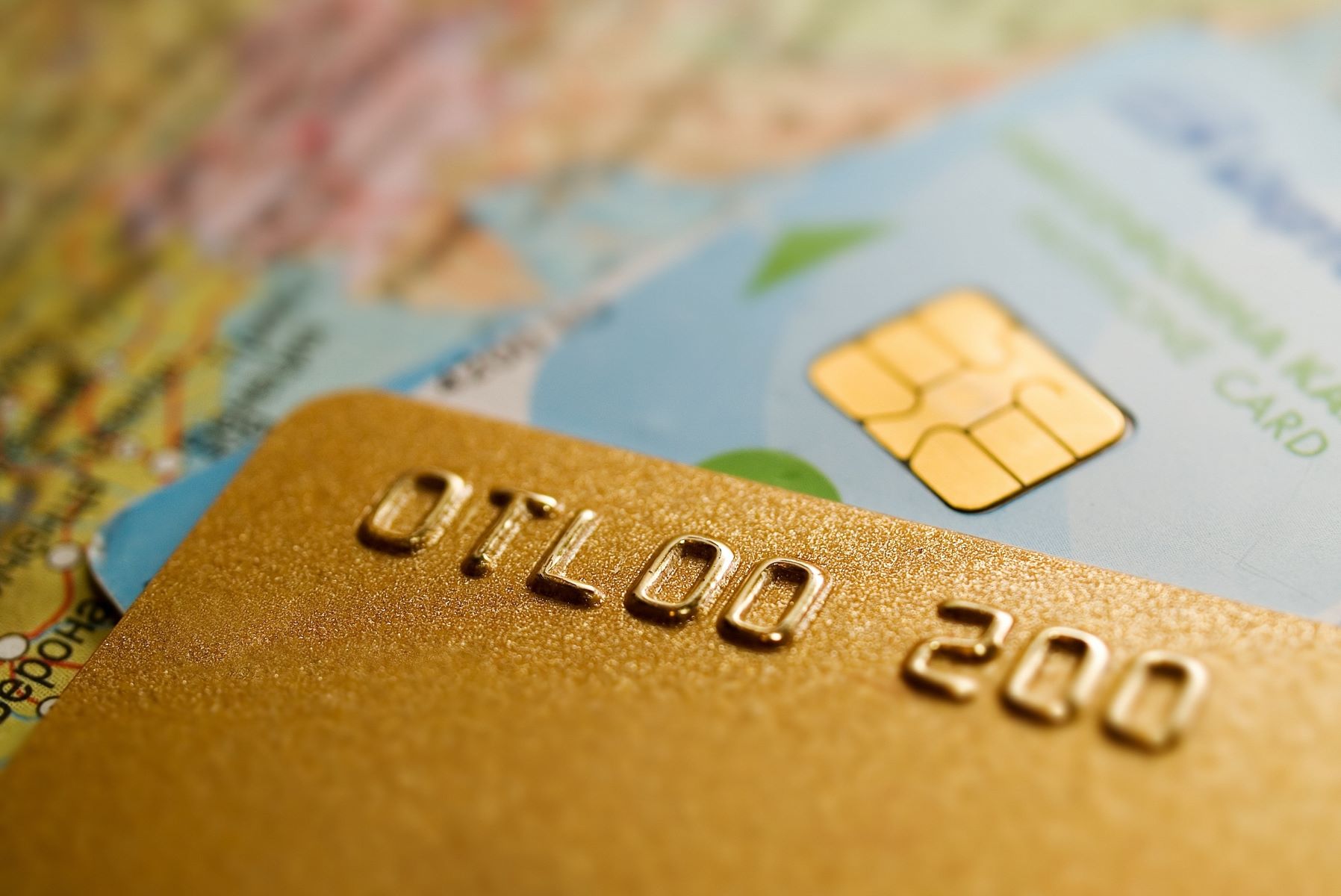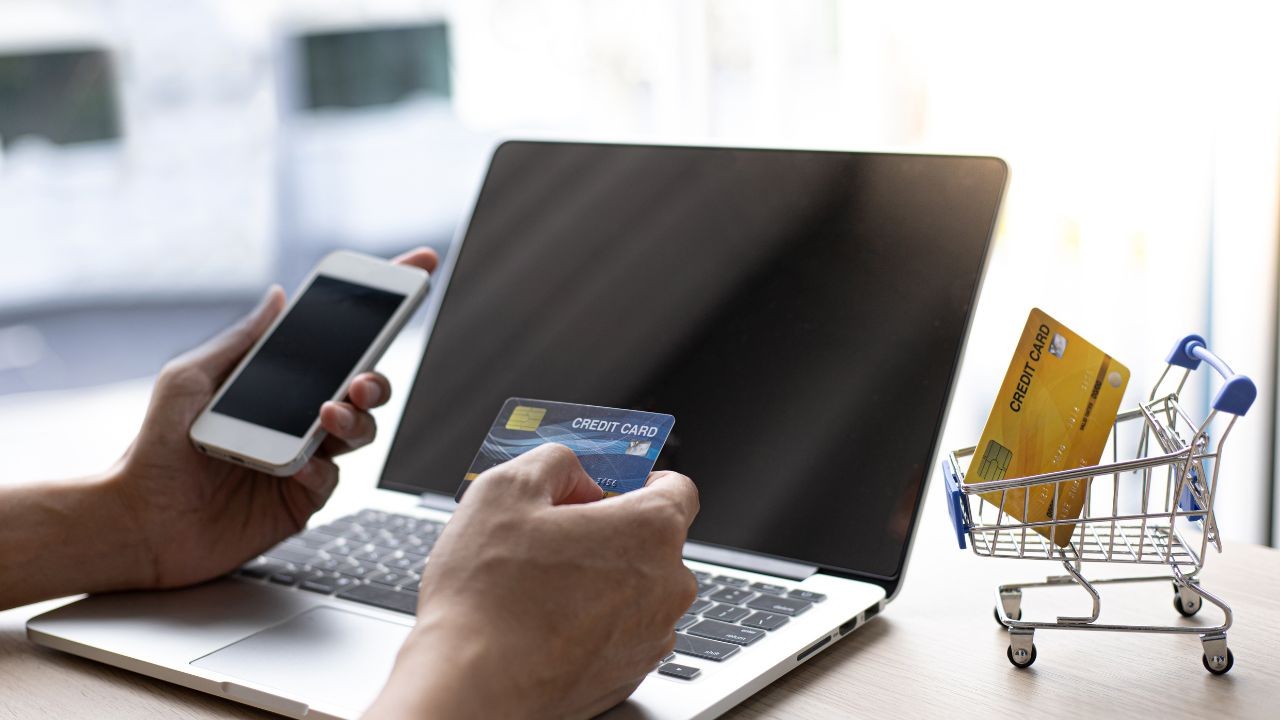

Finance
How To Use Credit Card To Open Door
Published: October 26, 2023
Learn how to use your credit card as a clever finance tool to open doors and unlock new opportunities. Maximize rewards, build credit, and gain financial flexibility.
(Many of the links in this article redirect to a specific reviewed product. Your purchase of these products through affiliate links helps to generate commission for LiveWell, at no extra cost. Learn more)
Table of Contents
- Introduction
- Understanding Credit Card Technology
- Choosing the Right Credit Card System for Door Access
- Setting Up the Credit Card Reader
- Programming the Credit Card Reader
- Granting Access with a Credit Card
- Monitoring and Managing Door Access
- Troubleshooting Common Issues
- Security Considerations and Best Practices
- Conclusion
Introduction
Welcome to the world of modern security systems where credit card technology is not just limited to making purchases, but also unlocking doors. Gone are the days of carrying bulky key chains or memorizing complex access codes. With the advent of credit card door access systems, you can now use your credit card as a convenient and secure way to gain entry to your home, office, or any restricted area.
In this article, we will explore the fascinating world of credit card door access systems and guide you through the process of setting up and using this innovative technology. Whether you’re a homeowner looking to upgrade your security system or a business owner in need of a streamlined access control solution, this article will provide you with the knowledge and tools to leverage the power of credit cards for door access.
But before we delve into the nitty-gritty details, let’s take a moment to understand the technology behind credit card door access systems. These systems utilize the same technology found in traditional magnetic stripe or chip-based credit cards. This means you can use your existing credit or debit cards to unlock doors, making it convenient and cost-effective.
One of the key advantages of using credit cards for door access is the ability to customize access permissions. With a traditional lock and key system, you would need to issue physical keys to each individual who requires access, making it difficult to manage and track who has access to your premises. However, with a credit card door access system, you can easily add or remove access permissions for specific individuals, granting them temporary or permanent access as needed.
In the next sections, we will discuss the necessary steps to implement a credit card door access system. Starting from choosing the right credit card reader system to programming it to grant access, we will cover everything you need to know to make the most out of this modern security solution.
So, let’s get started on this exciting journey into the world of credit card door access systems and discover how this innovative technology can revolutionize the way we secure our spaces.
Understanding Credit Card Technology
Before we dive into the intricacies of using credit cards for door access, let’s take a moment to understand the technology that powers these cards. Credit cards typically utilize either magnetic stripe or chip technology, although newer cards may also incorporate contactless technology such as Near Field Communication (NFC).
Magnetic stripe cards have been in use for decades and feature a black stripe on the back of the card. This stripe contains encoded information that can be read by a card reader. When swiped through a magnetic stripe reader, the information stored on the stripe is sent to the reader and processed for authentication purposes.
Chip cards, also known as EMV (Europay, Mastercard, and Visa) cards, have an embedded microchip that stores encrypted information. When inserted into a chip reader or tapped on a contactless card reader, the microchip interacts with the reader to authenticate the card and authorize the transaction or access request.
Contactless cards, on the other hand, use radio frequency identification (RFID) or NFC technology to communicate with a card reader. These cards have a small antenna embedded in them, allowing the card to transmit data wirelessly when placed near a compatible reader.
Credit card door access systems utilize the same technology found in these credit cards. By leveraging the magnetic stripe, chip, or contactless capabilities of the card, the access control system can authenticate and grant access to individuals based on their card credentials.
It’s important to note that the specific technology used by your credit card door access system may vary depending on the manufacturer and model. Some systems may only support magnetic stripe cards, while others may be compatible with chip or contactless cards as well. Therefore, it’s crucial to choose a credit card reader system that aligns with the types of cards you plan to use.
Now that you have a basic understanding of credit card technology, let’s move on to the next section where we will explore how to choose the right credit card system for door access.
Choosing the Right Credit Card System for Door Access
When it comes to choosing the right credit card system for door access, there are several factors to consider to ensure compatibility, functionality, and security. Here are some key aspects to keep in mind:
- Card Compatibility: Determine the types of credit cards you plan to use for door access. If you primarily use magnetic stripe cards, ensure the system you choose supports magnetic stripe readers. If you have chip or contactless cards, look for systems that can read these types of cards as well.
- Security Features: The security of your premises is of utmost importance. Look for credit card systems that offer advanced encryption mechanisms to protect the cardholder data and prevent unauthorized access attempts. Additionally, consider systems that offer multi-factor authentication options, such as requiring a PIN or biometric verification in addition to the card swipe or tap.
- Scalability: Consider the scalability of the system. If you plan to expand your access control system in the future, ensure that the credit card system can accommodate growth by supporting additional card readers, managing multiple access points, and easily adding or revoking access permissions for individuals.
- User-Friendly Interface: The user interface of the credit card system should be intuitive and easy to navigate. Look for systems that offer a user-friendly interface for programming and managing access permissions. This will save time and reduce the learning curve for administrators and users alike. Additionally, consider systems that provide clear and concise user instructions for seamless card usage.
- Integration Capabilities: If you already have an existing security system in place, ensure that the credit card system is compatible with your current infrastructure. Look for systems that offer integration capabilities with other security components such as alarms, CCTV cameras, or biometric systems for a comprehensive security solution.
Furthermore, it is recommended to read reviews and seek recommendations from trusted sources or consult with security professionals to gain insights into the reliability, performance, and customer support of different credit card systems. This information can help you make an informed decision and choose a system that best suits your specific needs.
Once you have identified a credit card system that meets your requirements, the next step is to set up the credit card reader. In the next section, we will walk you through the process of setting up your credit card reader for optimal door access functionality.
Setting Up the Credit Card Reader
Setting up the credit card reader is a crucial step in implementing a credit card door access system. Follow the steps below to ensure a smooth and successful installation:
- Choose the Installation Location: Select an optimal location for the credit card reader. Ideally, it should be easily accessible to users while maintaining security. Consider placing it near the entry point or in a central location for convenience.
- Mounting the Reader: Depending on the design of the credit card reader, you may need to mount it on a wall, door frame, or an access control panel. Ensure that the reader is securely installed and aligned properly for easy card insertion or tapping.
- Connect the Reader: Connect the credit card reader to the power supply and the access control system. Follow the manufacturer’s instructions to ensure proper wiring and connection. It is recommended to consult a professional or an electrician if you are unsure about the proper installation.
- Test the Reader: Verify that the credit card reader is functioning correctly by conducting a test. Swipe or tap a test card to ensure that the reader is reading the card credentials accurately. If the reader is programmable, follow the manufacturer’s instructions for test programming and verification.
It’s important to note that the installation process may vary depending on the specific model and manufacturer of the credit card reader. Always refer to the installation manual provided by the manufacturer for detailed instructions tailored to your specific device.
Once the credit card reader is properly installed, the next step is programming the reader to recognize and authenticate the credit cards used for door access. In the next section, we will explore the process of programming the credit card reader to grant access to authorized individuals.
Programming the Credit Card Reader
To set up the credit card reader for door access, you need to program it to recognize and grant access to authorized individuals. Follow these steps to program your credit card reader:
- Access the Programming Menu: Depending on the model of your credit card reader, access the programming menu by following the manufacturer’s instructions. This is typically done through a combination of key presses or a specific sequence of actions.
- Enter the Administrator Mode: Once you’re in the programming menu, enter the administrator mode by inputting the administrator code or password. This grants you access to the advanced settings and configuration options of the reader.
- Add User Access Data: In the administrator mode, you can add user access data by programming the credit card reader to recognize the specific credit cards of authorized individuals. This typically involves swiping or tapping the credit card to capture its unique identifier and associating it with the corresponding user’s access permissions.
- Set Access Restrictions: Determine the access permissions for each individual or group. You can specify the days and times when access is allowed or restricted, set up schedules for temporary access, and define any additional access restrictions or requirements such as requiring a PIN or biometric verification in addition to the card swipe or tap.
- Save and Test: After programming the credit card reader, save the settings and conduct tests using authorized cards to ensure that the access control system is functioning as intended. Test different scenarios to verify that the appropriate access permissions are granted or denied based on the programmed settings.
Remember to keep a record of the access permissions and any changes made to the programming settings. This will help you manage and update the access control system efficiently in the future.
If you encounter any difficulties or have specific programming requirements, it is recommended to refer to the user manual provided by the manufacturer or seek assistance from their customer support team. They can provide guidance and address any questions or concerns you may have regarding the programming process.
Now that the credit card reader is programmed and ready to grant access, let’s explore how you can use a credit card to gain entry to your desired location in the next section.
Granting Access with a Credit Card
With the credit card reader properly installed and programmed, it’s time to explore how to use a credit card to gain access to your desired location. Follow these steps to grant access with a credit card:
- Approach the Card Reader: As you approach the door or access point, have your credit card ready in your hand or wallet.
- Align the Card: Align the magnetic stripe or the chip of your credit card with the designated area on the credit card reader. If you are using a contactless card, tap it gently on the reader if required.
- Swipe or Tap the Card: Depending on the type of credit card reader and the technology used, swipe the card through the magnetic stripe reader, insert it into the chip reader slot, or simply tap it on the contactless card reader. Follow any on-screen prompts or instructions if provided.
- Wait for Verification: The credit card reader will verify the card credentials, and if the card is recognized and authorized, the reader will send a signal to unlock the door or grant access. This is typically signaled by a green light or audible confirmation.
- Open the Door: Once the credit card reader has verified and authorized access, the door lock will disengage, allowing you to open the door and enter the area.
It’s important to note that the specific process may vary depending on the model and manufacturer of the credit card reader. Always refer to the instructions or user manual provided by the manufacturer for specific guidance related to your credit card reader.
Additionally, keep in mind any specific access restrictions or requirements that have been programmed into the credit card reader. For example, if the system requires a PIN or biometric verification in addition to the credit card, make sure to follow the additional steps or prompts as prompted by the reader.
Granting access with a credit card offers a convenient and secure method for accessing restricted areas. However, it’s essential to remember to keep your credit card secure and report any lost or stolen cards immediately to prevent unauthorized access.
In the next section, we will discuss the importance of monitoring and managing door access to ensure the ongoing security of your premises.
Monitoring and Managing Door Access
Monitoring and managing door access is a crucial aspect of maintaining the security of your premises. By effectively monitoring and managing who has access to different areas, you can enhance security, track entry, and quickly detect any unauthorized access attempts. Here are some key considerations for monitoring and managing door access:
- Access Logs and Reports: Utilize the features of your credit card door access system that provide access logs and reports. These logs and reports track each instance of access, including the date, time, and user details. Regularly review these logs to identify any anomalies or suspicious activity.
- Access Permissions Review: Regularly review and update access permissions for individuals or groups. Ensure that only authorized personnel have access to specific areas, and promptly remove access for individuals who no longer require it. This helps prevent unauthorized access and maintains the integrity of the access control system.
- Security Notifications: Set up security notifications or alerts through your access control system. These notifications can be configured to alert you in real-time when there is unauthorized access, a door is propped open, or any other predefined security events occur. This allows you to take immediate action and respond to potential security threats.
- Remote Monitoring: Depending on the capabilities of your credit card door access system, consider implementing remote monitoring. This allows you to monitor door access from a centralized location or even through a mobile device, providing flexibility and convenience for managing access control remotely.
- Integration with Video Surveillance: Integrate your credit card door access system with video surveillance cameras. This synchronization enables you to have visual records of individuals entering and exiting various areas, providing an additional layer of security and facilitating investigations if necessary.
- Regular System Maintenance: Perform regular maintenance checks and updates on your credit card door access system. Ensure that the hardware is functioning properly, software is up-to-date, and any vulnerabilities are addressed promptly. Regular system maintenance helps prevent any potential lapses in security.
By implementing these monitoring and management practices, you can maintain a secure environment and effectively manage access to your premises. Regularly assessing and reviewing the effectiveness of your access control measures will contribute to maintaining a robust security infrastructure.
In the next section, we will address common issues you may encounter with credit card door access systems and provide troubleshooting tips.
Troubleshooting Common Issues
While credit card door access systems offer a convenient and secure way to manage access to your premises, you may encounter certain issues that can disrupt the functionality of the system. Here are some common issues that may arise and troubleshooting tips to resolve them:
- Card Recognition Problems: If the credit card reader is not recognizing or reading the cards properly, ensure that the cards are clean and free from any dirt, dust, or damage that may interfere with the reading process. If the issue persists, try using a different card to determine if it is a specific card-related issue or a problem with the reader itself.
- System Connectivity Issues: If the credit card reader is not communicating or connecting to the access control system, check the connectivity cables and ensure they are securely connected. Verify that the power source is functioning correctly and restart the system if necessary. If the issue persists, consult the user manual or contact the manufacturer for further assistance.
- Access Denied or Unauthorized Entry: If users are experiencing difficulty gaining access or receiving unauthorized entry messages, verify that their access permissions are correctly programmed into the system. Check for any conflicting schedules or access restrictions that may be preventing access. Additionally, ensure that the cards being used are still active and valid for access.
- Reader Malfunction: If the credit card reader itself is malfunctioning, try power cycling the reader by disconnecting it from the power source and then reconnecting it. If the issue persists, consult the manufacturer’s troubleshooting guide or contact their support team for further assistance or to arrange for repairs or replacements if necessary.
- False Alarms: If the system is generating false alarms, such as indicating a door is open when it is actually closed, check the door sensor for any obstructions or misalignment. Adjust or recalibrate the sensor if needed. If the issue persists, it may be necessary to replace the sensor or seek professional assistance.
Remember to follow the specific troubleshooting steps outlined in the user manual provided by the manufacturer. The troubleshooting process may vary depending on the model and features of your credit card door access system.
If you are unable to resolve the issues on your own, it is recommended to contact the manufacturer’s technical support team or consult with a professional locksmith or security system technician who specializes in access control systems. They will have the expertise to diagnose and address any complex issues that may arise.
With proper troubleshooting and timely resolution, you can maintain the smooth operation of your credit card door access system and ensure the security of your premises.
In the next section, we will discuss important security considerations and best practices to maximize the effectiveness of your credit card door access system.
Security Considerations and Best Practices
When implementing a credit card door access system, it’s crucial to prioritize security and follow best practices to ensure the integrity of your premises. Here are some important security considerations and best practices to keep in mind:
- Secure Card Storage: Store your credit cards securely when they are not in use. Avoid leaving them in easily accessible areas or openly visible at your desk. Consider using a locked drawer or a secure cardholder to prevent unauthorized access to the cards.
- Regularly Update Access Permissions: Regularly review and update access permissions as needed. Remove access for individuals who no longer require it or have left the organization. This helps prevent unauthorized entry and reduces the risk of compromised access credentials.
- Control Card Distribution: Only distribute credit cards to authorized individuals who require access. Avoid sharing cards among multiple users and maintain strict control over their distribution. Consider implementing a card distribution and tracking system to monitor and manage card issuance.
- Employee Training and Awareness: Educate employees, tenants, or any authorized users on the importance of safeguarding their credit cards and following security protocols. Promote awareness of potential risks such as card theft, unauthorized access attempts, and the consequences of sharing or misplacing cards.
- Regular Auditing: Conduct regular audits and inspections of your credit card door access system. This includes reviewing access logs, monitoring security alerts, and ensuring that the system is functioning as intended. Identify any vulnerabilities or suspicious activity and take appropriate actions to mitigate the risks.
- Manage Physical Security: While credit card door access systems enhance security, it’s essential to also maintain physical security measures. Secure doors and windows, install surveillance cameras in critical areas, and implement alarms or motion detectors to provide additional layers of protection.
- Implement Multi-Factor Authentication: Consider enhancing the security of your credit card door access system by implementing multi-factor authentication. This may include requiring a PIN or biometric verification in addition to the card swipe or tap to ensure that only authorized individuals can gain entry.
- Regular System Maintenance: Perform routine system maintenance, including software updates and hardware inspections, to ensure that your credit card door access system remains robust and secure. Regular maintenance helps address any vulnerabilities and keeps your system up to date with the latest security enhancements.
By following these security considerations and best practices, you can maximize the effectiveness of your credit card door access system and maintain a secure environment for your premises and personnel.
In the next section, we will conclude our article and summarize the key points discussed.
Conclusion
In conclusion, credit card door access systems provide a convenient and secure solution for managing and controlling access to your premises. By leveraging the technology found in credit cards, you can simplify the process of granting entry to authorized individuals while enhancing security measures.
Throughout this article, we explored the various aspects of credit card door access systems, from understanding the technology behind credit cards to choosing the right system for your needs. We discussed the importance of setting up and programming the credit card reader, as well as the process of granting access with a credit card.
We also highlighted the significance of monitoring and managing door access, troubleshooting common issues, and implementing security considerations and best practices. By adhering to these practices, you can ensure the ongoing security and effectiveness of your credit card door access system.
Remember, maintaining a secure environment requires regular maintenance, periodic reviews of access permissions, and promoting security awareness among individuals who have access to the system.
Overall, credit card door access systems offer a modern and reliable solution for controlling access to your home, office, or any restricted area. By harnessing the power of credit card technology, you can enhance security, streamline access control management, and provide a seamless user experience for authorized individuals.
We hope that this article has provided you with valuable insights and guidance on how to use credit cards for door access. By implementing the recommendations outlined here, you can confidently utilize this innovative technology to protect your premises and ensure the safety of your occupants.
Remember, if you have any specific questions or concerns about your credit card door access system, always refer to the manufacturer’s instructions or seek assistance from their support team. They are the best resource for providing detailed information and troubleshooting guidance tailored to your specific system.
Thank you for joining us on this journey into the world of credit card door access systems. Embrace this technology and take control of your security with the power of credit cards!














